Psychology Part II: Our Female Ph.D. Graduates at Berkeley

Throughout 2020, the Psychology Department is joining the campus in celebrating 150 Years of Women at Berkeley. October 3, 2020 marks the 150th anniversary of the UC Regents’ unanimous approval in 1870 of a resolution by Regent Samuel F. Butterworth: “That young ladies be admitted into the University on equal terms in all respects with young men.” The first women were admitted as students to the university in 1872, four years after its opening in 1868.
We are marking this milestone event with three articles, the last of which is forthcoming. Part I highlighted 10 trailblazing women in psychology at Berkeley who attained notable “firsts”. Here, in Part II, we specifically celebrate our female Ph.D. graduates in psychology, first, looking at patterns across our graduates and second, capturing the careers of a sample of them.
A BRIEF HISTORICAL OVERVIEW
For more than 100 years, we have trained outstanding female scientists and practitioners in psychology, of whom we are very proud. Since 1915, approximately 650 women have earned Ph.D. degrees in Psychology at Berkeley—47% of the doctorates awarded by our department.
The first four students to earn a Ph.D. in psychology at Berkeley were all women. Among them were Olga Bridgman and Jean Macfarlane. These two graduates also became the first female faculty members in psychology at Berkeley, in 1915 and 1924, respectively. For many decades to follow, men were to outnumber women in graduate degrees, at a ratio that reached 3 to 1 in the 1960’s. In the first two decades of the 21st century, this pattern has reversed, with women outnumbering men at a ratio of approximately 2 to 1 in our department—called by some the feminization of psychology. Increasingly, our female graduates can be found in all subfields of the discipline, including physiological psychology and subfields of neuroscience, in contrast to their early predominance in clinical and developmental psychology.
However, while the representation of women in the pool of Ph.D. graduates has grown over time, the representation of women of color, especially African American, Latina, and Native American women, remains disturbingly low. The 2018 survey of earned doctorates nationwide shows 28% of degrees in psychology awarded to ethnic minorities as a whole. It was not until the 1970’s, 100 years after women were first admitted to Berkeley, that women of color became visible in the graduate student ranks of the Psychology Department. Their increasing presence was in part fueled by an investment of the Clinical Science program in the study of minority mental health. Part I of this series of articles highlighted Diane Howell, our first African American female Ph.D. graduate in 1978 and Yvette Flores, our first Latina Ph.D. graduate in 1982 to pursue an academic career. The goal of increasing the representation of women (and men) of color in our graduate student ranks must be vigorously addressed. In response to passionate email discussions over the past weeks, the Psychology Department is in the process of forming a new committee devoted to issues of Diversity, Equity, Inclusion (DEI), made up of faculty graduate students and staff.
Before we showcase the careers of 10 of our female Ph.D.’s, we comment here on some interesting historical facts about our Ph.D. graduates. The sister-in-law of Edward Tolman—an esteemed professor in our department known for the study of purposive behavior, his refusal to sign the loyalty oath, and his namesake building, Tolman Hall, recently razed—obtained her doctorate in clinical psychology (1937) at Berkeley. Ruth Tolman, notorious for an alleged affair with J. Robert Oppenheimer (father of the atomic bomb), was a well-known contributor to the field in her own right. She furthered the inclusion of women in the war effort, created early treatment of PTSD for returning soldiers, worked in the Office of Strategic Services (OSS, a forerunner of the CIA), and was the first woman to be elected to the Society for the Psychological Study of Social Issues (SPSSI). Read more about Ruth Tolman
Of special note, a 1970 Ph.D. graduate and distinguished developmental psychologist, the late Carol Tomlinson-Keasy became the founding Chancellor at UC Merced (1999-2007). In that role, she enabled the actualization of a dream to provide the underserved Central Valley of California with its own vibrant UC campus. Read more about Carol Tomlinson-Keasy
Finally, a number of our female Ph.D. graduates in psychology have remained or returned to contribute to the excellence of the Berkeley campus. Nine of our graduates have served or currently serve as faculty members at Berkeley (Psychology: Olga Bridgman, Jean Macfarlane, Catherine Landreth, Ravenna Helson, Lynn Robertson; Business: Karlene Roberts; Social Welfare: Yu-wen Ying, Jewelle Taylor Gibbs; and Public Health: Emily Ozer). Three of our graduates (Hilde Burton, Georgine Marrott, and Laura Mason) became directors of our Psychology Clinic and many more have served or now serve as supervisors of the clinical training of our students. Also noteworthy, historically, a number of our female graduates (Ravenna Helson, Marjorie Honzik, Diana Baumrind, and Wanda Bronson) have been appointed as research psychologists at two campus research institutes (Institute for Personality and Social Research [IPSR] and Institute for Human Development [IHD]). This pattern is reflective of a time when nepotism rules precluded spousal hires within academic departments, when partner ties kept them local, and when there were fewer supports that helped women combine a full-time career with child-rearing. Beginning in the 1970’s and still needed, substantial changes have been introduced on the Berkeley campus which have increased opportunities for women, including the gutting of nepotism rules and the adoption of spousal hiring and family-friendly policies.
CELEBRATING 10 FEMALE PH.D. GRADUATES IN PSYCHOLOGY AT BERKELEY
As we look across our female graduates, we see a range of career pathways taken, from academic positions, research careers, applied roles in varied settings, to administrative posts—both in the US and abroad. Drawing from faculty nominations, we highlight a sample of 10 outstanding female Ph.D. graduates who represent different historical eras and a diversity of impactful careers. While just a handful of our outstanding graduates over the course of our departmental history, these snapshots illustrate how our graduates have used their psychology training and the nature of their important contributions.
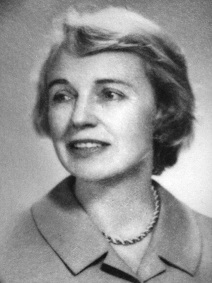
Catherine Landreth (1899-1995)
Elevating the importance of preschool education. Born in Dunedin, New Zealand into a family of educators, Catherine Landreth came to the U.S. for graduate school. She earned an M.S. in nutrition and education from Iowa State University in 1926 and a Laura Spellman Rockefeller Fellowship that enabled the study of two newly established university nursery schools. Landreth received her Ph.D. from UC Berkeley in 1936 in developmental psychology under the direction of Harold E. Jones. After a brief teaching appointment at University of Chicago, she returned to Berkeley in 1938 as a faculty member in the Department of Home Economics and lecturer in Psychology, ultimately with the demise of her department, transferred in 1962 as a professor of Psychology, becoming emerita in 1964. During this time, she was Director of the Nursery School of the Institute of Child Welfare (founded in 1927 and a precursor of the H. E. Jones Child Study Center), where she supervised graduate students in early childhood education and research.
With Jones, she was pivotal in the founding and especially in the design of the landmark Harold E. Jones Child Study Center at Berkeley, opened in 1964. She collaborated with the architect Joseph Esherick to create a model play and learning environment for children that enabled quality education as well as faculty and graduate student research on child development. A pioneer who shaped the field of early childhood education, Landreth authored three classic books, Education of the Young Child (with Katherine H. Read), 1942, The Psychology of Early Childhood, 1958, and Preschool Learning and Teaching, 1972. She was known to be a “tough-minded researcher… at a time when concern for experimental and methodological rigor was rare.” Her work included studies in early childhood education (for example, in the incidence of crying), social perception of prejudice, and the value of preschool education. A statewide survey in which she was a contributor played a role in a 1947 legislative decision to finance child-care centers for children of working mothers. Her research, which showed racial prejudice to be related to parents’ education and seen in children as young as three, in part influenced the 1954 U.S. Supreme Court decision disbanding segregated education. Cherished for her colorful personality, Landreth was also lauded as a superb teacher as well as for her integration of scholarship and effective practice. An oral history from her about the development of the nursery school (1981) can be accessed through the Bancroft Library.
Read about Catherine Landreth
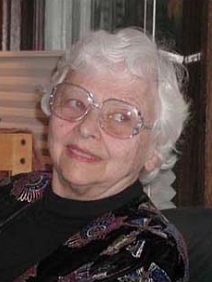
Ravenna Helson
Advancing the study of lifespan development and the psychology of women. After receiving her B.A. and M.A. from the University of Texas-Austin, Ravenna Helson completed her Ph.D. in Psychology with Warner Brown at the UC Berkeley in 1952. While an assistant professor at Smith College she met Henry Helson, a mathematics professor at Yale, whom she married in 1954. In 1955, Henry was offered a position at UC Berkeley and Helson left Smith College (without another offer in sight) to move back to California. Helson joined UC Berkeley’s Institute of Personality and Social Research, IPSR, (known then as the Institute of Personality Assessment and Research, IPAR) in 1957, where she stayed as a full-time research psychologist until her retirement. She was appointed as an adjunct professor in Psychology in 1980.
Helson is best known for pioneering the Mills Longitudinal Study—the largest and longest study on women’s development from young adulthood to old age, which she started at a time when most of psychology treated men as the only scientifically interesting subject matter. Initially, she recruited over 100 women who were seniors at the Mills College in 1958-1960, to study the relationship between women’s personality and creativity. The project begun receiving funding from the National Institutes of Mental Health in the 1980s and over time, its scope expanded to examine patterns of stability and change in personality across the life-span more broadly. For example, Helson studied changes in personality, identity, and psychological functioning vis-à-vis women’s relationships with romantic partners, raising children, their roles within the family and the workplace, and the vicissitudes of the cultural milieu that occurred as they aged. The Mills study generated over 100 publications to date, marking Helson as one of the most generative and influential leaders in the study of lifespan development, aging and psychology of women.
Helson received the Block Award from the Society of Personality and Social Psychology in 2003 for her research accomplishment in personality psychology and was inducted to the Heritage Wall of Fame by the Foundation for Personality and Social Psychology in 2018. Her new book (with Valory Mitchell) “Women on the River of Life: A Fifty-Year Study of Adult Development” will be published by the UC press in November 2020, in the year she turns 95.
Read about Ravenna Helson
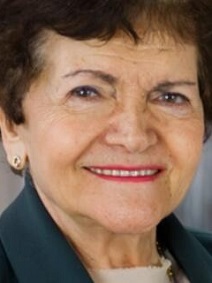
Çiğdem Kağıtçıbaşı (1940-2017)
One of the founders of cross-cultural psychology. A native of Turkey, Çiğdem Kağıtçıbaşı received her B.A. at Wellesley College (1961) and Ph.D. in social psychology with M. Brewster Smith at the University of California, Berkeley (1967). Between 1973 and 1994, she worked as psychology faculty first at Middle East Technical University, Ankara and then at Boğaziçi University, Istanbul. In 1995, she moved to Koç University, Istanbul where she was the Dean of Social Sciences (1998-2001) and the Director of the Center for Gender and Women’s Studies (2010 to 2017).
Kağıtçıbaşı is considered one of the founders of Cross-Cultural Psychology world-wide. Her cross-cultural research is renowned in challenging the Western modernization hypothesis that with socio-economic development models of family and the self in the developing world will converge on Western ideals (i.e., economic independence, psychologically autonomous selves). In contrast, Kağıtçıbaşı’s large-scale cross-national comparative studies showed that in culturally collectivistic, non-Western families modernization leads to economically independent but emotionally interdependent family systems, which are unique in their ability to simultaneously satisfy fundamental human needs for autonomy and relatedness. Her co-authored book describing this research, “Families Across Cultures: A 30 Nation Psychological Study” was the recipient of the Ursula Gielen Global Psychology Book Award (American Psychological Association, 2008).
Kağıtçıbaşı’s contributions to research and social policy in child development are also numerous. Of note, she spearheaded the establishment of AÇEV (Mother Child Education Foundation, MOCEP, 1993), where she helped develop low-cost early education, family literacy, and women’s support programs targeting socially disadvantaged urban neighborhoods. These programs are in wide application in Turkey as well as in some centers in Europe (Belgium, Germany, France, Switzerland) and the Middle East (Bahrain, Jordan, Saudi Arabia, Lebanon).
Kağıtçıbaşı received Distinguished Contribution Awards for her applied work from the American Psychological Association (1993) and the International Association of Applied Psychology (1998). Her research on child development was recognized by awards from the European Society for Developmental Psychology, (2007) and the Society for Research on Adolescence (2012). She served as the Vice President of the International Union of Psychological Science (1996-2000) and the International Social Science Council, UNESCO (2004- 2006). She was the first female President of the International Association for Cross-Cultural Psychology (1990-92).
Read about Çiğdem Kağıtçıbaşı

Karlene Roberts
Illuminating organizational features that reduce catastrophic risk. Karlene Roberts received her B.A. from Stanford University (1959) and Ph.D. in psychology with Edwin Ghiselli at UC Berkeley (1967). Roberts started her academic career at the Haas School of Business at UC Berkeley in 1969 where she stayed until her retirement. She served as the Associate Dean and Director of the Undergraduate School of Business Administration (1985-1987), and was a longstanding member of the Institute of Industrial Relations (1970-1995) and the Berkeley Faculty Association (1995-2008).
Roberts was trained as an Industrial & Organizational psychologist and is best known for her research on High Reliability Organizations (HRO), which are organizations that have succeeded in avoiding major catastrophes despite operating in extremely high-risk and complex environments that are prone to accidents and errors. By studying three key HROs—the United States nuclear aircraft carriers, the Federal Aviation Administration's Air Traffic Control system, and the Pacific Gas and Electric's Diablo Canyon nuclear reactor, Roberts and her colleagues developed the HRO theory on the structural, procedural, and social mechanisms that define the unique characteristics of the HROs. These include systems for process-auditing, rewards, avoiding quality degradation, risk assessment, and command/control. Their findings have been applied to many organizations such as the U.S. Coast Guard, and the National Aviation and Space Administration (NASA), to name a few. Throughout her career, Roberts was highly sought after as a consultant by a wide range of organizations both national (e.g., the U.S. Navy, Homeland Security, PG&E) and international (e.g., United Nations International Atomic Energy Agency).
Roberts was an elected fellow to the American Psychological Association, Academy of Management and American Psychological Society and a founding member of the International Conference in Information Systems. In 2011, she was awarded the Practice Impact Award by the Academy of Management which recognizes an outstanding scholar for their significant impact on organizations, governments, or society as a whole. She was also awarded an honorary doctorate by the Université Paul Cezanne Aix-Marseille III, in 2006. Roberts’ research was continuously funded by the National Science Foundation, as well as other government agencies (e.g., Department of Labor, FAA, NASA). She is the author of 9 books and over 100 book chapters and journal articles.
Read about Karlene Roberts
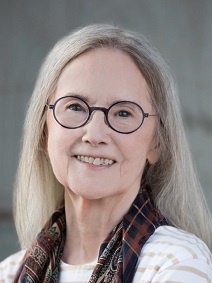
Marcia Johnson
Mapping memory lane. Marcia Johnson was born in Alameda, California. She earned both her B.A. in psychology and Ph.D. in experimental psychology from the UC Berkeley (mentor Leo Postman). Her first position was as an assistant professor at Stony Brook, where she remained until 1985, when she became a professor at Princeton University. In 2000, she moved to Yale, where she was appointed the Diller Professor of Psychology in 2004, and then the Sterling Professor of Psychology in 2010. She became an emeritus professor in 2017.
She was a dedicated mentor to her graduate students who include Elizabeth Phelps, Mara Mather, and Wil Cunningham. Her mentorship was recognized with awards from the Association for Psychological Science, the American Psychological Association Division 20 , and Yale University Graduate School.
She used cognitive behavioral and neuroimaging (fMRI) techniques to investigate a broad range of puzzles in human cognition and memory. In the Multiple-Entry, Modular memory system (MEM) theory, she and her colleagues developed a highly regarded model of the basic components of memory. In the Source Monitoring Framework (SMF) theory, she and her colleagues considered how individual features of experience are bound together to create complex memories, and how we distinguish (and still sometimes confuse) our memories, imaginations, dreams, and fantasies. She conducted highly cited work on how emotion and aging influence cognition. Her work enhanced understanding of the nature of memory disorders.
She received more awards than can be listed here, among them the American Psychological Association Distinguished Scientific Contribution Award, American Psychological Foundation Gold Medal Award for Life Achievement in the Science of Psychology, the American Psychological Society William James Fellow Award, a Guggenheim Fellowship, and the Cognitive Neuroscience Society Fred Kavli Distinguished Career Contributions Award in Cognitive Neuroscience. In 2014, she was elected to the National Academy of Sciences. In addition to her impressive intellectual accomplishments, she has been recognized and loved for being a “valued mentor and colleague, with infectious enthusiasm, warmth, generosity, and humor” (APA Distinguished Scientific Contribution Award citation, 2006).
Read about Marcia Johnson
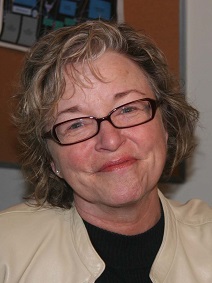
Lynn Robertson
Advancing understanding of visual disorders in neurological injury and disease. Lynn Robertson received her Ph.D. in cognitive psychology from UC Berkeley in 1980, working with Stephen Palmer. She served as a research psychologist at the Veterans Administration Medical Center in Martinez, CA from 1982-1993 and on the faculty at the UC Davis School of Medicine, Departments of Neurology and Medicine (1984-1998), where she rose through the adjunct professor ranks. Robertson returned to UC Berkeley in 1998 as an adjunct professor in the Department of Psychology, Vision Sciences, and the Helen Wills Neuroscience Institute. She is currently an Adjunct Professor Emerita at UC Berkeley, and a Senior Research Career Scientist in the Office of Veteran Affairs.
Her research in cognitive neuroscience has contributed significantly to our understanding of how the parietal lobes “bind” different features of incoming visual information to recognize objects and their importance. Think about a gray ball coming towards one’s head—one has to rapidly encode, using different regions of the cortex, the color, shape, size, and movement, to understand this is a ball and not a rock. Robertson’s work helps us understand the brain regions and cognitive processes shaping this binding. She uses neurocognitive measures in healthy persons and those with well-defined brain lesions to study these processes. Her work has major implications for understanding visual disorders in those with neurological injury and disease, including those with unilateral neglect, prosopagnosia (face blindness) and congenital visual-spatial deficits.
Dozens of her articles, including work published in Nature Reviews Neuroscience and in the Proceedings of the National Academy of Sciences have been cited more than 100 times. She is the author or co-author of four books—including books describing cognitive neuroscience findings in synesthesia, spatial processing abilities, and (with Rich Ivry) hemispheric influences on perception—and over 200 research articles. She has garnered sustained research funding, mentored generations of students, shouldered numerous administrative and committee roles, including the advance of women in neuroscience, and has been named a fellow of the American Association for the Advancement of Science, Association for Psychological Science, and the American Psychological Association.
Read about Lynn Robertson
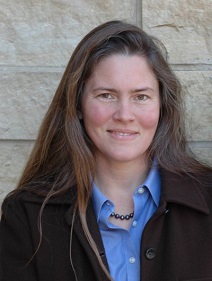
Laura Helmuth
Bringing rigor to the reporting of science. Laura Hellmuth received her B.S. in Biology and Psychology in 1991 from Eckerd College. Her doctoral work, supervised by Rich Ivry as her graduate mentor, centered on the neuroscience of Parkinson’s Disease. During graduate school, she realized that her passion was in thinking about the big questions in science and in the dissemination of science to the public, so when she finished her Ph.D., she enrolled in a science communication certificate program at UC Santa Cruz.
She began her writing career as a staff reporter and editor for Science Magazine, and has been an editor at Smithsonian Magazine, the online magazine Slate, National Geographic, and the editor of Health, Science and Environment for The Washington Post. In 2020, Helmuth became the Editor-in-Chief of Scientific American. Laura has been described by the Washington Post as “one of the most respected science journalists in the country.”
Helmuth is dedicated to communicating about science in innovative and creative ways, and to reducing misinformation. Her work on this front has been widely recognized. She serves as a member of a committee on advancing science communication for the National Academies of Sciences, Engineering, and Medicine, and she lectures widely at prestigious institutions about how journalists can counter misinformation. Helmuth has served as the President of the National Association of Science Writers, and as a board member for the Society for Science and the Public, and the American Association for the Advancement of Science's SciLine service which connects scientists and journalists.
At Slate, Helmuth generated imaginative science coverage, including a series, "Two Lives: Why Are You Not Dead Yet?", that asked readers to consider why the human lifespan has doubled (popular answers: Antibiotics and interventions in childbirth.) At the Washington Post, she oversaw the development of a video series (with authors Rothschild and Monroe) on vaccine hesitancy, and developed a mystery format to engage readers in-depth medical coverage. In 2020, she developed a tip sheet to reduce the potential for misinformation for journalists covering the coronavirus disease pandemic. She also provides commentary on science news through her highly popular Twitter account (@laurahelmuth).
Read about Laura Helmuth
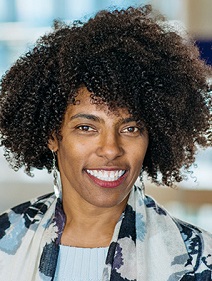
Sybil Madison
Reducing the opportunity gap for ethnic minority and under-resourced youth. With an undergraduate degree with honors from the University of North Carolina, Chapel Hill, Sybil Madison obtained her Ph.D. in clinical and community psychology at UC Berkeley in 1998, under the direction of Rhona S. Weinstein. For her research on the impact of school closings following Brown v. Board of Education, Madison won two American Psychological Association Dissertation Awards, one from the Committee on Minority Affairs and the other from the Division of Community Psychology. She completed a predoctoral internship at the Institute for Juvenile Research University of Illinois, Chicago and most recently completed the Civic Leadership Academy at the Harris School of Public Policy, at the University of Chicago.
Madison has forged a more than 20-year career as an evidence-based “systems change” leader—enabling institutions to achieve positive outcomes for under-resourced youth and families in the urban schools and communities of Chicago, the nation’s third largest city. Her roles have been varied and her work has been based in a number of Chicago’s university settings, including the University of Illinois-Chicago, the University of Chicago, DePaul University, and Northwestern University.
In addition to serving as a research professor and teaching interns as well as masters’ students, Madison has evaluated HIV risk and prevention programs, trained teachers and administrators in school-based promotion of healthy development, equity, and excellence, and was a founding co-director for a new 6-12 grade charter school. As the director of the Center for Excellence in Computer Science, a unique collaboration between Chicago Public Schools, Apple, and Northwestern, Madison increased the availability of computer science education to students across Chicago. She also participated as a member of the Chicago Police Accountability Task Force (2015-2016), which in its report and hearings documented evidence of racism and systemic failures in the city’s police force.
Since 2019, Madison has served as the first deputy mayor of Chicago for education and human services. This is a new position that will help ensure that the needs of less-resourced children, youth, families, and residents will be met in more integrative and effective ways, working collaboratively across city departments and institutions. For example, the “My CHI. My Future” Initiative addresses the city’s opportunity gap through the collective commitment of a coalition of city departments and community-based organizations to connect children and youth to positive learning opportunities. Sybil Madison is doing the work of her dreams.
Read about Sybil Madison

Laura Elizabeth Schulz
Transforming understanding of children’s learning. Laura Schulz earned her B.A. in Philosophy at the University of Michigan, Ann Arbor and her Ph.D. in developmental psychology from UC Berkeley in 2004 with mentorship from Alison Gopnik. In order to maintain commitments to a wife and children, with Gopnik’s support, she commuted weekly from Oregon to Berkeley to earn her Ph.D. She has been a faculty member at the Massachusetts Institute of Technology since then, currently full professor in the Department of Brain and Cognitive Sciences.
Schulz has been fascinated by questions of how babies and young children use their everyday experiences to form views of the physical and social world and of the self. Her sophisticated computational work has changed our understanding of how children learn and explore. In her creative experiments using eye tracking and play labs, she helped show that even young children use probability and Bayesian inference. She has also shown how children’s play is finely tuned to help gain knowledge. She has published in top journals (Science, PNAS, and Nature communications), and dozens of her articles have been cited more than 100 times.
In addition to her science, she is a dedicated mentor. She co-runs a post-baccalaureate research scholars program which helps disadvantaged students prepare for graduate training. She has won awards from MIT for her mentorship and teaching.
She also has a talent for the dissemination of science. Drawing on her work on creativity and exploration, she consults with children’s museums on how to refine exhibits. In her widely viewed TED talk, she uses a video of a 15-month-old to show how quickly young children form causal hypotheses, a process that Schulz describes as the “fundamental skill of human cognition” that means we “sometimes get the world wrong,” and also “so often get it right.”
Schulz has received numerous awards, including the American Psychological Association Distinguished Scientific Award for Early Career Contribution to Psychology, the National Academy of Sciences Troland Award the Society for Research in Child Development, Award for Early Career Research Contributions, the National Academy of Sciences Kavli Fellowship, and the NSF Presidential Early Career Award for Scientists and Engineers.
Read about Laura Schulz

Amori Yee Mikami
Advancing knowledge about more inclusive peer-group environments. Amori Mikami received a B.A. and M.A. from Stanford University and a Ph.D. in clinical psychology from UC Berkeley in 2004, under the direction of Stephen Hinshaw. She completed a predoctoral clinical internship and postdoctoral fellowship at the University of California at San Francisco. Mikami’s first academic position was as an assistant professor at the University of Virginia, later moving to the University of British Columbia in Canada where she is currently professor of psychology as well as a licensed clinical psychologist. Her creative contributions span clinical and developmental psychology, with her major research interest growing out of a childhood experience of multiple moves before the age of 18. This alerted her to the variability in school and neighborhood norms. Mikami became fascinated with how social context factors can influence peer relationships and how interventions with teachers and parents might prevent peer rejection.
Her attention to context has shifted the paradigm, moving from the remediation of deficits within rejected children toward changing features of classroom ecologies. Using rigorous methods such as intervention trials, she trains teachers to encourage a peer-group environment that is inclusive and welcoming so as to make it unlikely that any child will be peer-rejected. She also instructs parents in strategies that maximize the probability that the children will get along, as a way to encourage friendship development. This contextual work on optimizing peer relationships has been applied to children with ADHD and autism spectrum disorders, and to social media use in children and youth.
Mikami is a highly productive scholar who has attracted substantial research funding and garnered many awards for research and teaching. These honors include the UBC Killam Research Prize (2018), the Association for Psychological Science (APS) Rising Star (2011), the Young Scientist Research Award from Children and Adults with ADHD (CHADD), a national advocacy group (2006) and a Junior Faculty Mentoring Award, American Psychological Association, Division 53 (Child Clinical) (2005). Mikami was also honored at the University of Virginia in 2010 with a university-wide Alumni Board of Trustees Teaching Award and a Psychology Department Distinguished Professor Award.
Read about Amori Mikami